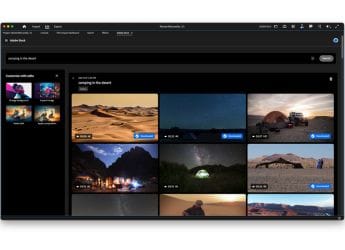- Home
- Science
- Science News
- NASA's Opportunity Rover Silenced by Dust Storm on Mars
NASA's Opportunity Rover Silenced by Dust Storm on Mars
NASA's Mars Exploration Rover Opportunity is shown in this handout photo
A Martian dust storm covering a quarter of the planet threatens a 15-year exploration mission by NASA's Mars Opportunity rover.
Operators at NASA's Jet Propulsion Laboratory (JPL) tried to contact the rover on Tuesday but did not receive a signal, which means the craft has likely entered a "low power fault mode" where all systems, save a mission clock, are shut down. The storm was detected May 30 and now fully blocks the sun at the rover's location, leaving the craft in total darkness. Without sunlight, the rover cannot recharge the batteries it needs for operations.
"The project team is very concerned," said John Callas, project manager for NASA's Mars Exploration Rovers mission at JPL. NASA ceased Opportunity's science operations on June 4 as engineers prepared to secure the craft against the storm, Callas said.
"At this point we're in a waiting mode, listening every day for possible signals every day from the rover," he said. "We're concerned but we're hopeful that the storm will clear and the rover will begin to communicate to us."
The clock periodically wakes the rover computer to check power levels. If the batteries are insufficiently charged, the computer will again enter a sleep mode, the same mode used each night to power down the rover. Opportunity can sit in the low-power mode "for an extended period of time," Callas said.
The immediate threat is that the rover, without power, could succumb to Mars' harsh overnight cold. The last temperature reading from Opportunity was -20F (-29C), NASA said Sunday. Engineers hope the storm will provide some atmospheric shielding against the planet's dramatic daily temperature swings, Callas said. The rover can withstand temperatures of -67F (-55C) and NASA expects the lowest temperature at this time of the year to reach -33F (-36C) at Opportunity's location.
Opportunity and its twin rover, Spirit, landed in January 2004. Both were scheduled to complete 90-day geology missions but were able to operate for years beyond that. Spirit sent data until March 2010 when it became lodged in sand and NASA was unable to extricate it. Besides Opportunity, the agency also operates the larger Curiosity rover, which touched down in August 2012. Last month, NASA launched Mars InSight, a probe to study the planet's inner geology, with landing scheduled in late November.
Mars experiences regional dust storms annually, but only occasionally do they expand to engulf the entire planet. The last such major storm occurred in 2007, which sent NASA's rovers into a "hunker down" mode for several weeks before the skies cleared.
The storms, which begin during the southern hemisphere's summer, are fueled by sunlight warming the surface-level air. That leaves the air in the upper atmosphere cooler than below and an unstable mix emerges; as the warmer air rises, it carries dust into the skies. Such storms last for weeks, or sometimes months, but stop when the air temperatures equalise.
The storms' cyclical nature, however, are poorly understood. One of the principal objectives of NASA's Mars Reconnaissance Orbiter, one of three US satellites tasked with analysing the planet, is to enhance our understanding of Martian meteorology.
"Not all Mars watchers are thrilled with the idea of a global dust storm, which can adversely affect ongoing missions," NASA noted in a January news release for the Reconnaissance Orbiter, which also described the precise loss-of-power scenario Opportunity now confronts.
Once the storm clears, and if NASA engineers can re-establish contact with Opportunity, they may find another vexing problem: "We may have a lot of dust on this vehicle that we have to deal with," Callas said.
© The Washington Post 2018
Catch the latest from the Consumer Electronics Show on Gadgets 360, at our CES 2026 hub.
Related Stories
- Samsung Galaxy Unpacked 2025
- ChatGPT
- Redmi Note 14 Pro+
- iPhone 16
- Apple Vision Pro
- Oneplus 12
- OnePlus Nord CE 3 Lite 5G
- iPhone 13
- Xiaomi 14 Pro
- Oppo Find N3
- Tecno Spark Go (2023)
- Realme V30
- Best Phones Under 25000
- Samsung Galaxy S24 Series
- Cryptocurrency
- iQoo 12
- Samsung Galaxy S24 Ultra
- Giottus
- Samsung Galaxy Z Flip 5
- Apple 'Scary Fast'
- Housefull 5
- GoPro Hero 12 Black Review
- Invincible Season 2
- JioGlass
- HD Ready TV
- Laptop Under 50000
- Smartwatch Under 10000
- Latest Mobile Phones
- Compare Phones
- Red Magic 11 Air
- Honor Magic 8 RSR Porsche Design
- Honor Magic 8 Pro Air
- Infinix Note Edge
- Lava Blaze Duo 3
- Tecno Spark Go 3
- iQOO Z11 Turbo
- OPPO A6c
- Lenovo Yoga Slim 7x (2025)
- Lenovo Yoga Slim 7a
- Lenovo Idea Tab Plus
- Realme Pad 3
- Moto Watch
- Garmin Quatix 8 Pro
- Haier H5E Series
- Acerpure Nitro Z Series 100-inch QLED TV
- Asus ROG Ally
- Nintendo Switch Lite
- Haier 1.6 Ton 5 Star Inverter Split AC (HSU19G-MZAID5BN-INV)
- Haier 1.6 Ton 5 Star Inverter Split AC (HSU19G-MZAIM5BN-INV)







![[Sponsored] Haier C90 OLED TV | Dolby Vision IQ, 144Hz OLED and Google TV in Action](https://www.gadgets360.com/static/mobile/images/spacer.png)









